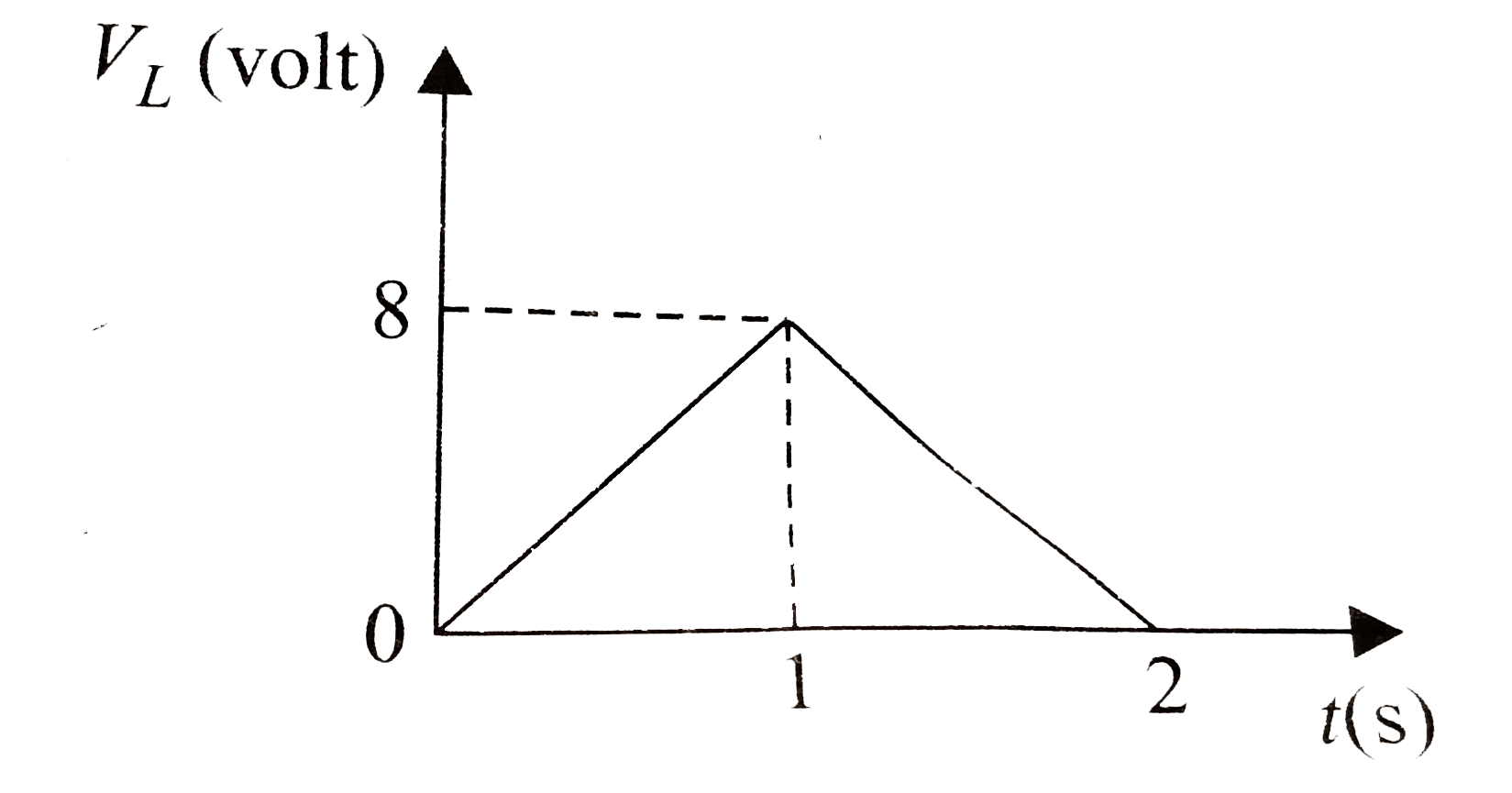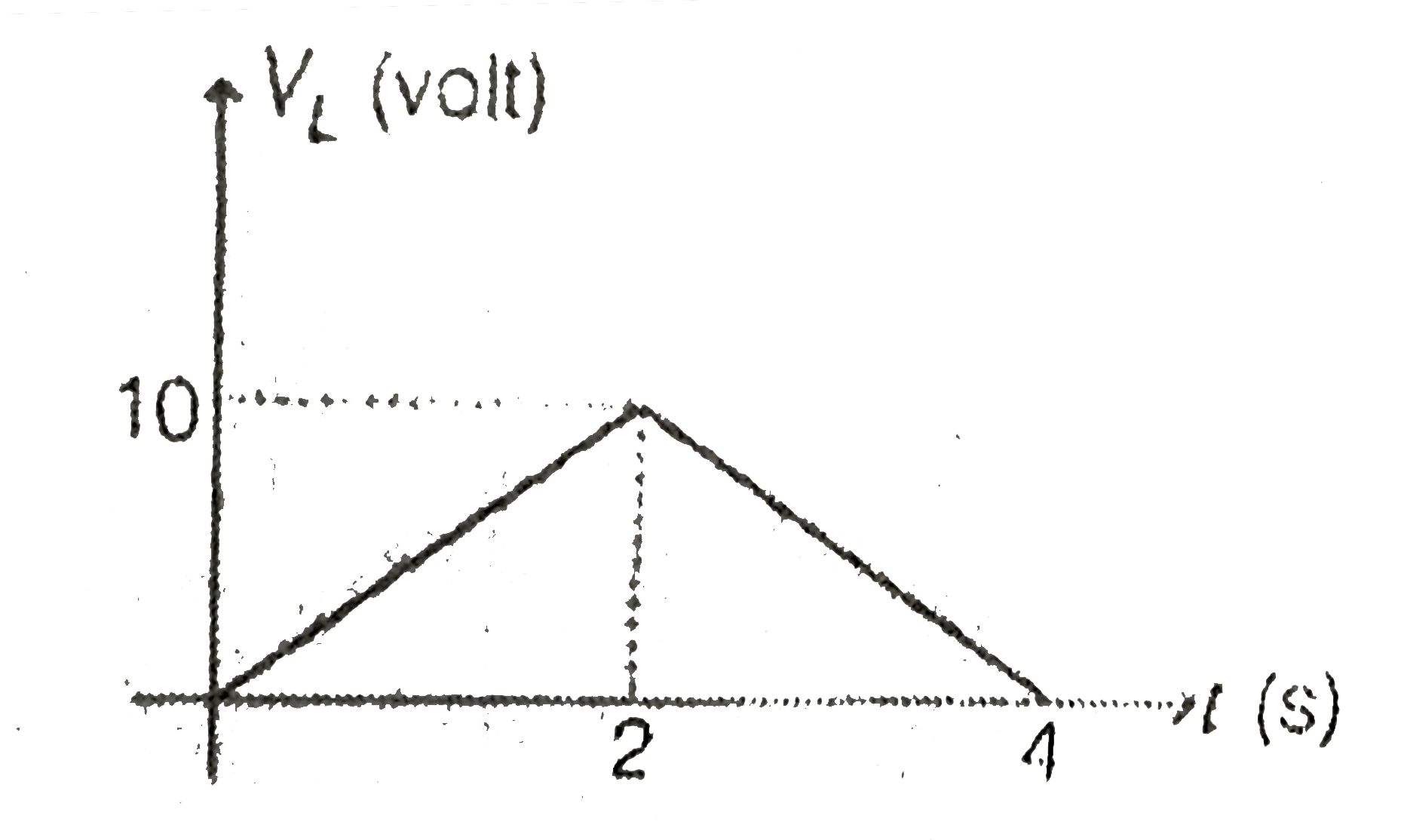The potential difference across a 2H inductor as a function of time is shown in figure. At time t=0, current is zero
Current t=2 second is

1A
3A
4A
5A
The correct Answer is:4
|e|=Ldidt⇒|e|dt=L(i1−i2)
|e|dt= area of Δ le for t=0 to 2 sec.
Topper's Solved these Questions
- BOOK - NARAYNACHAPTER - ALTERNATING CURRENTEXERCISE - NCERT Based Question1videos
ALTERNATING CURRENT
- BOOK - NARAYNACHAPTER - ALTERNATING CURRENTEXERCISE - LEVEL - IV NCERT Based Questions15videos
ALTERNATING CURRENT
- BOOK - NARAYNACHAPTER - ALTERNATING CURRENTEXERCISE - LEVEL - II (C.W)11videos
ALTERNATING CURRENT
- BOOK - NARAYNACHAPTER - ATOMIC PHYSICSEXERCISE - LEVEL-II (H.W)14videos
ATOMIC PHYSICS
Similar Questions
The potential difference across a 150mH inductor as a function of time is shown in figure. Assume that the initial value of the current in the inductor is zero. What is the current when t=2.0ms? and t=4.0ms ?
 View Solution
View SolutionThe charge on a capacitor plate in a circuit, as a function of time, is shown in the figure. What is the value of current at t=4s?
 View Solution
View Solution
Knowledge Check
- Question 1 - Select One
The potential difference across a 2-H inductor as a function of time is shown in Fig. At time t = 0, current is zero.

Current at t = 1 s isA1AB2AC4AD8A - Question 2 - Select One or More
The potential difference across a 10H inductor as a function of time is shown in the figure. At t=0 current is zero. Then
 AThe current in the inductor at t=6 is 3 ampBThe current in the inductor at t=1 sec is 1/4 ampCThe current in the inductor at t=4 is 5/2 amp.DThe variation of current versus time parabola.
AThe current in the inductor at t=6 is 3 ampBThe current in the inductor at t=1 sec is 1/4 ampCThe current in the inductor at t=4 is 5/2 amp.DThe variation of current versus time parabola. - Question 3 - Select One
The potentiak difference across a 2H inductor as a function of time is shown in the figure. At time t=0, current is zero.

Current versus time graph across the inductor will beA B
B C
C D
D
The potential difference a 2H inductor as a function of time is shown in figure. At time t=0, current is zero
Current versus time graph across the inductor will beView SolutionThe potential difference across a 2-H inductor as a function of time is shown in Fig. At time t = 0, current is zero.

The variation of current versus time isView SolutionThe potential difference across a 2−H inductor as a funtion of time is shows in Fig. At t=0, current is zero. Choose the corrent stetement.
 View Solution
View SolutionThe potential difference across a 2-H inductor as a function of time is shown in Fig. At time t=0, current is zero.

Area under VL−t graph givesView SolutionThe potential difference across a 4 H inductor vary with time is as shown. The current is Zero at t=0, Then the current at time t=2s
 View Solution
View Solution

